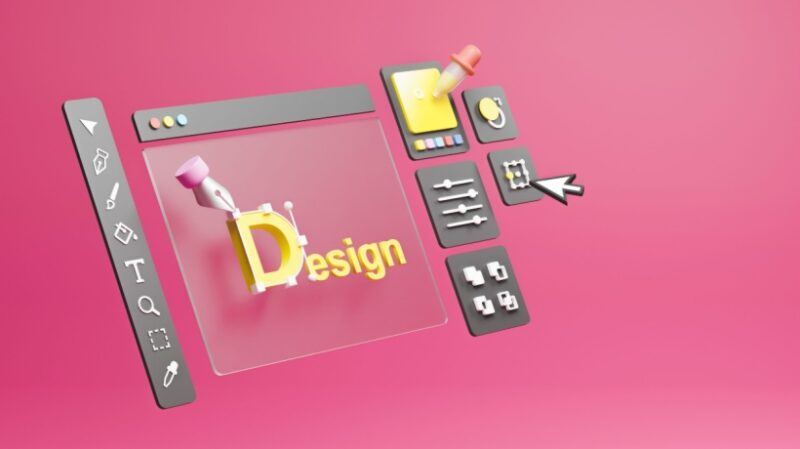
High-Impact Visual Design Principles For Instructional Style
Many Educational Designers know that the ability to compose clear, succinct message is a need for efficient Instructional Design. They realize that text– whether printed or electronic– is the keystone of the entire Instructional Layout procedure, from design/development to distribution and job examination, as defined listed below.
Text Required For Educational Design/Development (Internal-Facing Text)
- Knowing purposes
- Range and series
- Plans for stakeholder sign-off
- Instructor guides
- Storyboards and scripts (for multimedia manufacturing)
Text Required For Instructional Delivery (Learner-Facing Text)
- Training course packaging (e.g., LMS web page)
- Schedule/syllabus
- Subject-oriented web content (such as assigned textbooks or articles)
- Activity/assessment guidelines
- Interface creating for all ungraded practice interactivities
- Evaluations and rubrics
- Video transcripts, closed subtitles, and callouts
- Picture titles, inscriptions, and callouts
Text Required For Instructional Examination (Internal-Facing Text)
- Response secrets
- Gradebooks
- Stakeholder responses (e.g., supervisor reports)
- Analysis metrics and records
But while excellent sources abound for Instructional Designers who wish to boost their capability to compose properly, the acknowledgment that Instructional Designers should likewise know with, and able to use, basic but high-impact aesthetic format and design principles is much less well comprehended– and few obtainable resources are available to help us out. That’s a trouble, since format and layout can make or break students’ ability to make definition from message.
Sponsored content – post proceeds below
Trending eLearning Writing Devices
High-Impact Visual Design Concepts For Creating A Learning Experience
Below are one of the most essential and high-impact visual concepts to bear in mind when you’re creating any learner experience– whether that experience takes the type of instructional packaging such as a course web page, internet duplicate, a record, a slide deck, or a graded or ungraded interactivity.
Comparison
Comparison refers to the visual distinction in color and value in between foreground aspects and history aspects. High comparison makes foreground components attract attention greatly to ensure that they’re easy for students to see. Reduced comparison makes students struggle to separate foreground and background elements, and this struggle impacts not just aesthetic charm, however learners’ capability to make meaning. This holds true due to the fact that the human eye doesn’t eat text linearly, the method the human ear eats audio streams. Rather, our eyes snap back and forth across a page as we make and enhance connections amongst the facts, concepts and principles provided– and low-contrast elements hinder that process.
- Quick win
For any type of passages of text longer than a word or 2, always utilize black message on a white history– a particular high-contrast mix that has actually been proven to be most reliable for taking in text delivered via print or screen.
Forming
Forming permits students to translate and set apart standard principles promptly. For Instructional Style purposes, the most important applications of form are icons (such as the prebuilt symbols offered in layout software application) and grouping like aspects.
- Quick win
Pair streamlined icons or forms with brief message tags to explain partnerships and procedure circulation (vs. labeling much more elaborate illustrations or photos, which interact unimportant details and slow down student cognition needlessly.)
Size
Because humans tend to connect size with significance, students will naturally translate content represented by a huge photo as more vital than material stood for by a small (or no) image. Similarly, students will certainly think that ideas offered making use of an overmuch big quantity of message, tasks, evaluations, or minutes of video/live lecture are more crucial than concepts presented with much less message or less minutes of live action/running time.
- Quick win
Select only the most essential educational point(s) to supplement with visuals, and avoid “eye sweet” (appealing but irrelevant images). Display critical details, bottom lines, and titles/section headings in bolded or a bigger sized font style than the one you utilized to existing sustaining information.
Closeness
Humans presume that things which show up beside each other are associated in some essential means. (The traditional instance of this is coming home to discover our pet dog next to a busted vase: We instantly think our pet damaged the vase!) As Training Developers, we can take advantage of this concept by aesthetically organizing like points and aesthetically separating unlike things.
- Quick win
Usage bulleted and phoned number listings to group like message elements. Group aesthetic elements that are related somehow, and plainly different aesthetic aspects that are unconnected.
Positioning
Due to the fact that English reads from top to bottom and delegated right, English-speaking learners think that one of the most crucial details on a provided page or paper appears at the top left.
- Quick win
Setting bottom lines on top or top left of a record, screen, or slide in order of coming down importance.
Well-meaning design layouts, including those offered in the software program applications that Instructional Designers consistently utilize, strengthen the incorrect yet all-too-common assumption that visual formatting and design are subjective, optional nice-to-haves whose only function is to “make points pretty.” Yet absolutely nothing could be further from the fact.
Formatting and format approaches are vital elements of communication. When implemented thoughtfully, the methods defined above drive an audience’s ability to make significance. When we implement them inexpertly or overlook them entirely, nevertheless, the outcomes negatively influence both finding out results and (in corporate training scenarios) Roi.